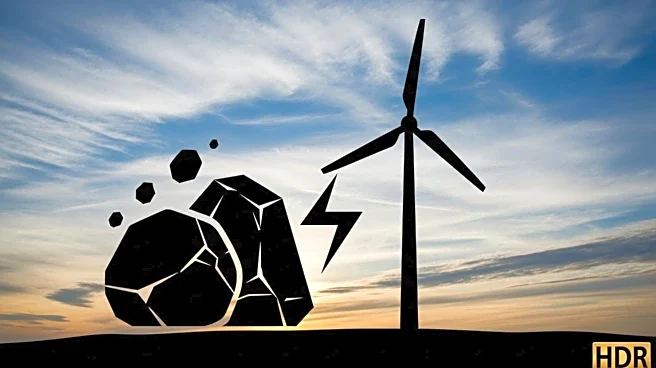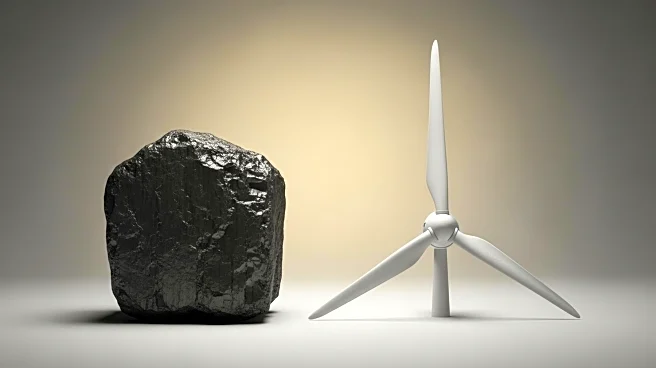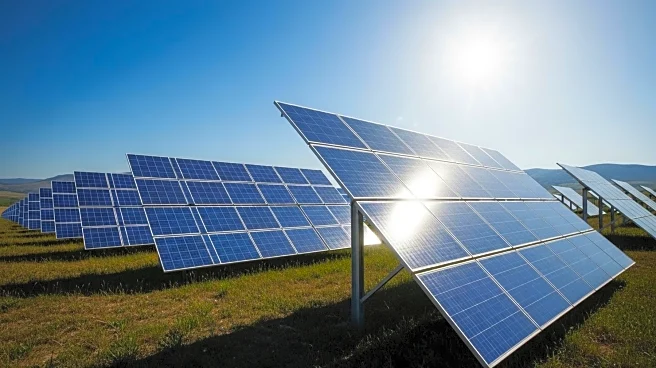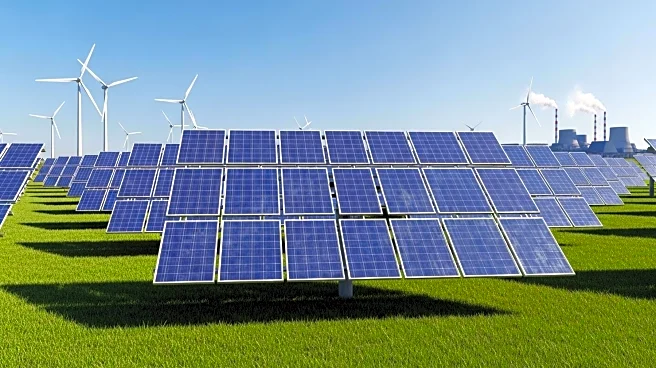What is the story about?
What's Happening?
In July, the United States added 18 MW of new coal capacity, surpassing wind additions, according to the Federal Energy Regulatory Commission (FERC). This development contrasts with the general trend of coal retirements. The report highlights that solar energy led new capacity additions with 1.18 GW, while wind added 16 MW. The Trump administration has prioritized new coal, gas, and oil deployments, with the Department of Energy allocating $625 million for coal plant retrofitting. Despite the coal increase, solar and wind have seen significant growth, with solar adding 16 GW and wind 3.28 GW from January to July. FERC forecasts substantial future additions in solar and wind, with no new coal expected.
Why It's Important?
The increase in coal capacity, despite a broader shift towards renewable energy, underscores ongoing policy influences and market dynamics. The Trump administration's focus on fossil fuels contrasts with global trends favoring renewables. This development could impact energy policy, environmental goals, and the energy market. Stakeholders in renewable energy may face challenges, while coal industry players might see short-term gains. The energy sector's evolution will affect economic and environmental strategies, influencing investment and regulatory decisions.
What's Next?
FERC's forecast suggests significant growth in solar and wind capacity, with 92.6 GW of solar and 22.6 GW of wind expected by 2028. The coal industry may face further retirements, with 25 GW of coal capacity set to retire. The energy sector will likely continue to navigate policy shifts and market demands, balancing fossil fuel interests with renewable energy expansion. Stakeholders will monitor regulatory changes and investment opportunities as the U.S. energy landscape evolves.
AI Generated Content
Do you find this article useful?














